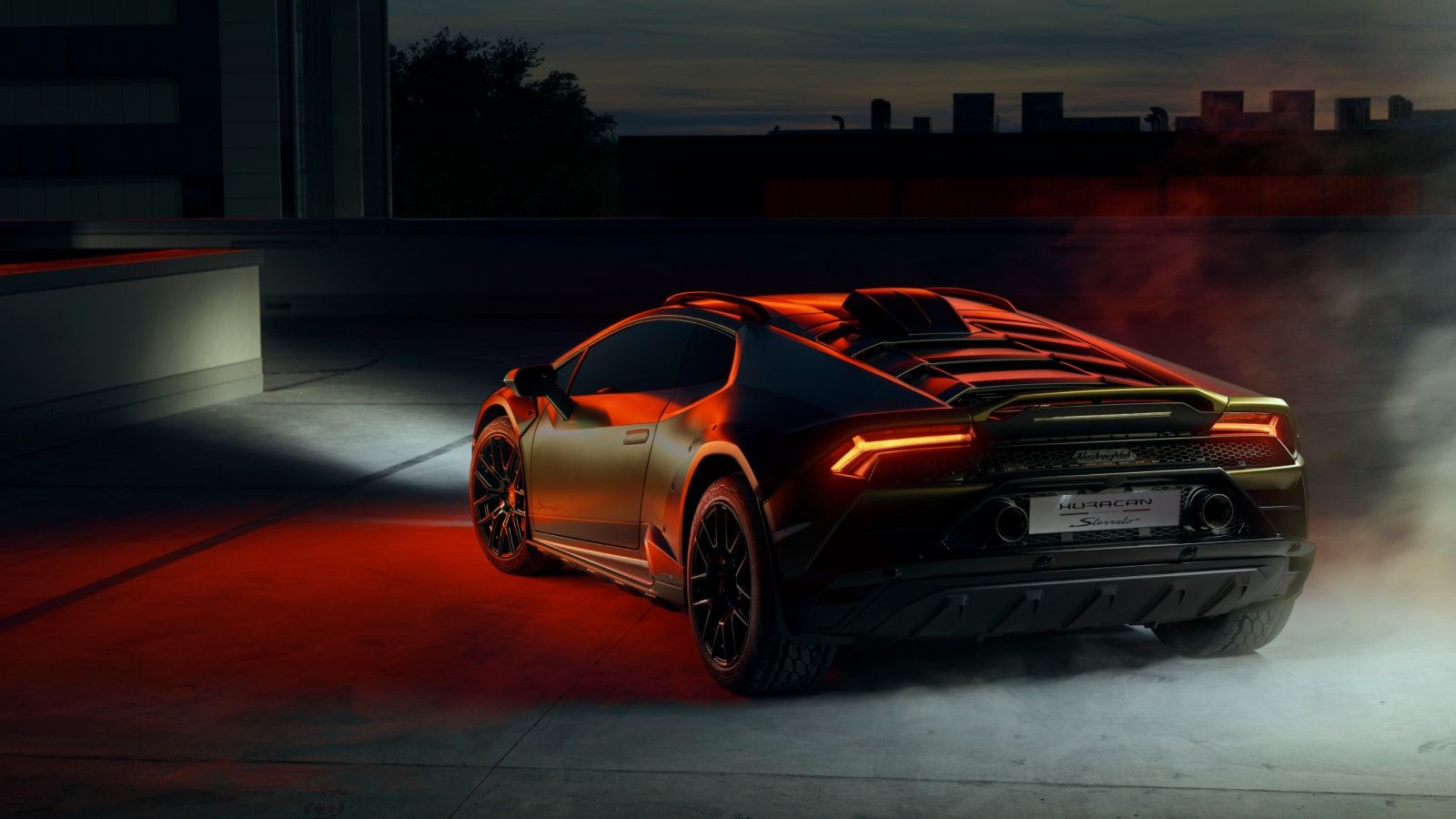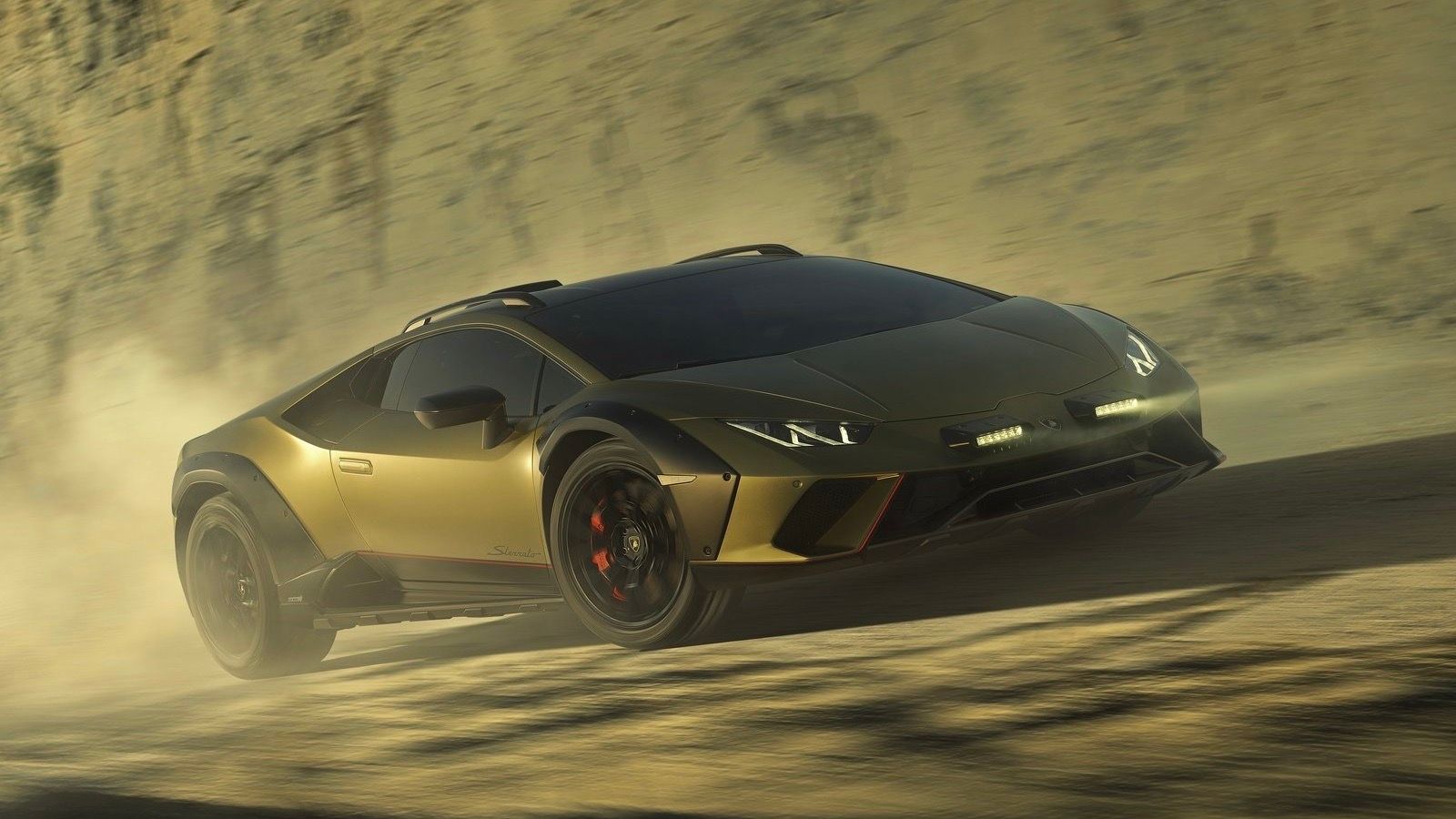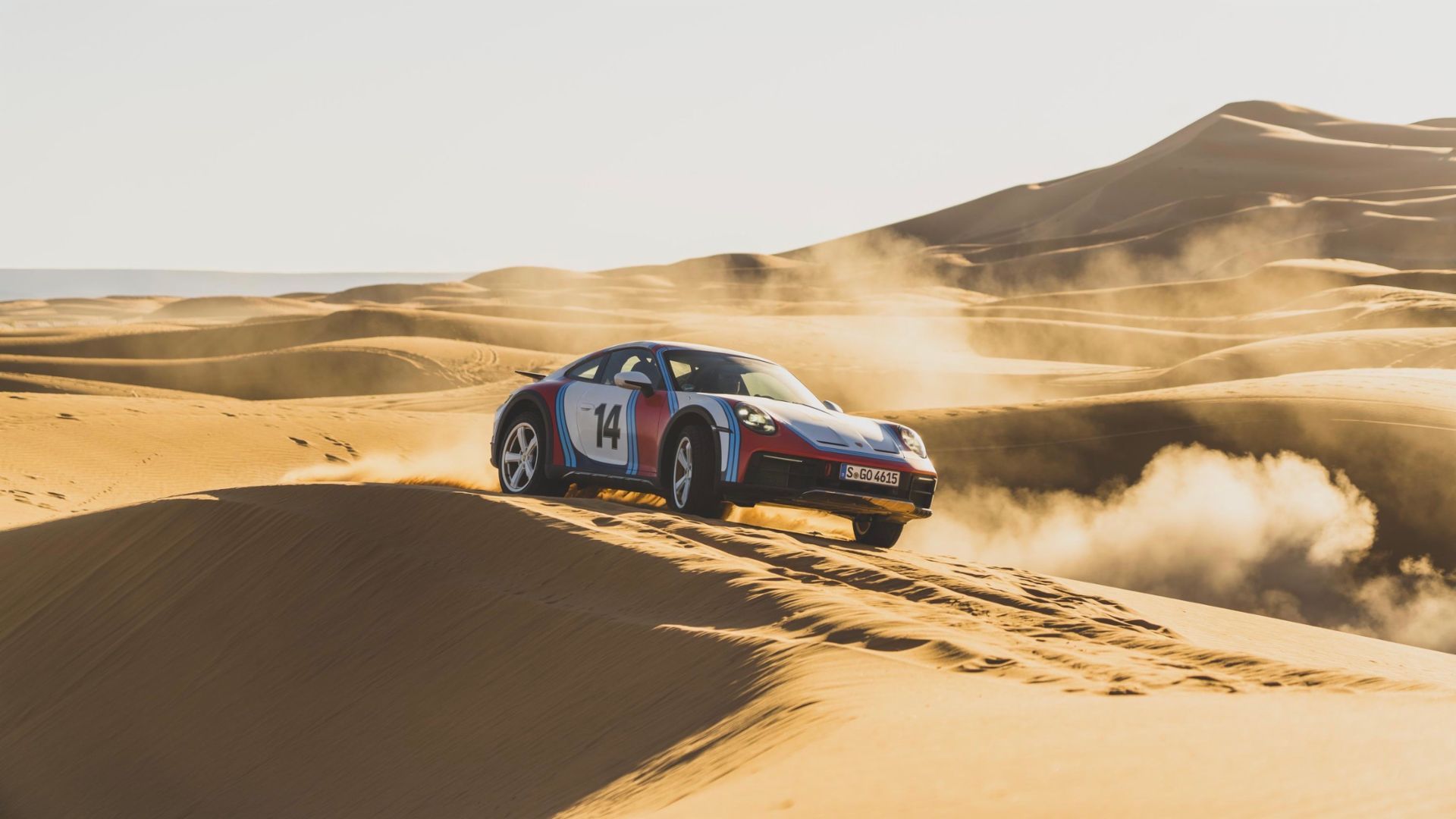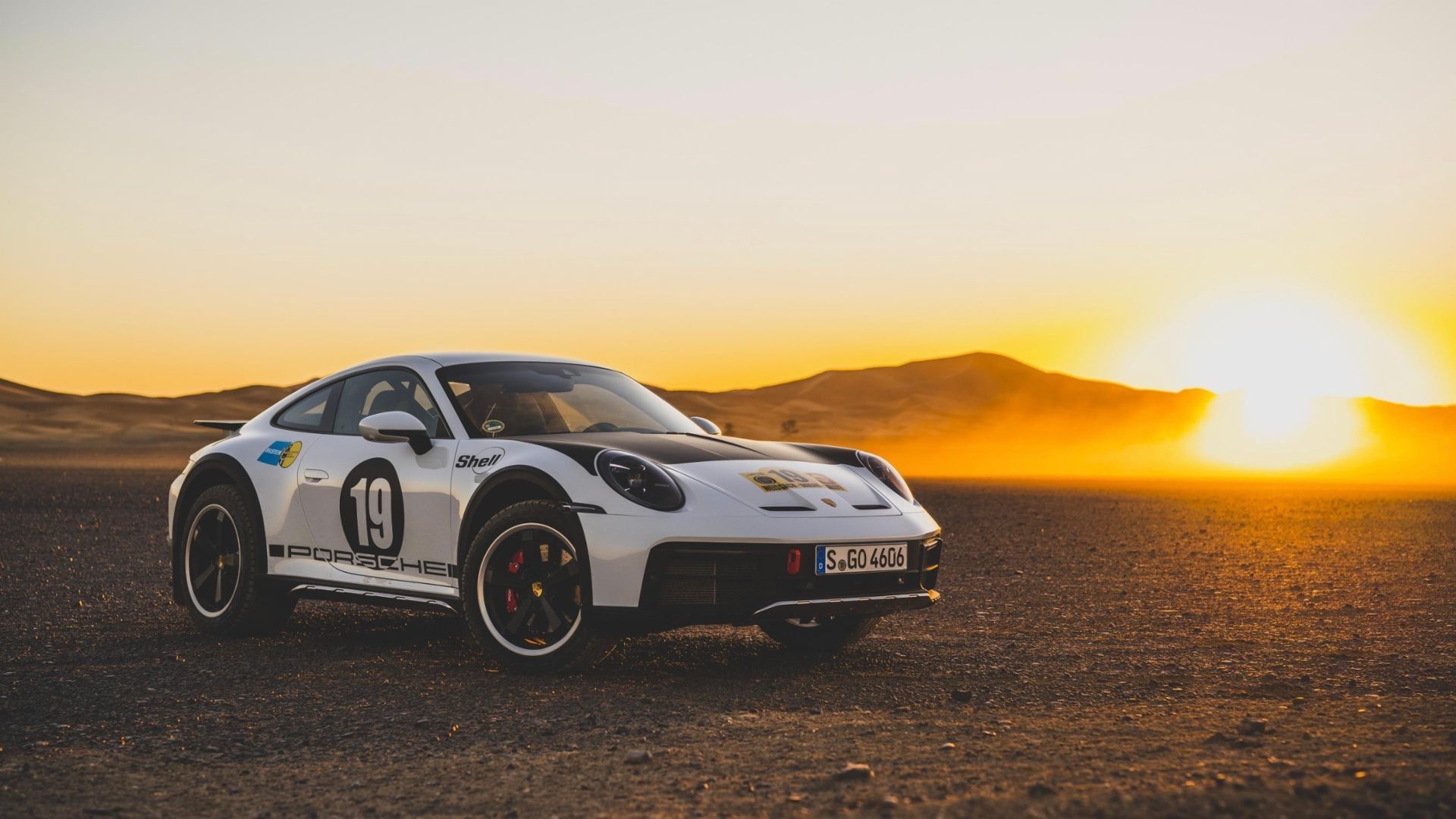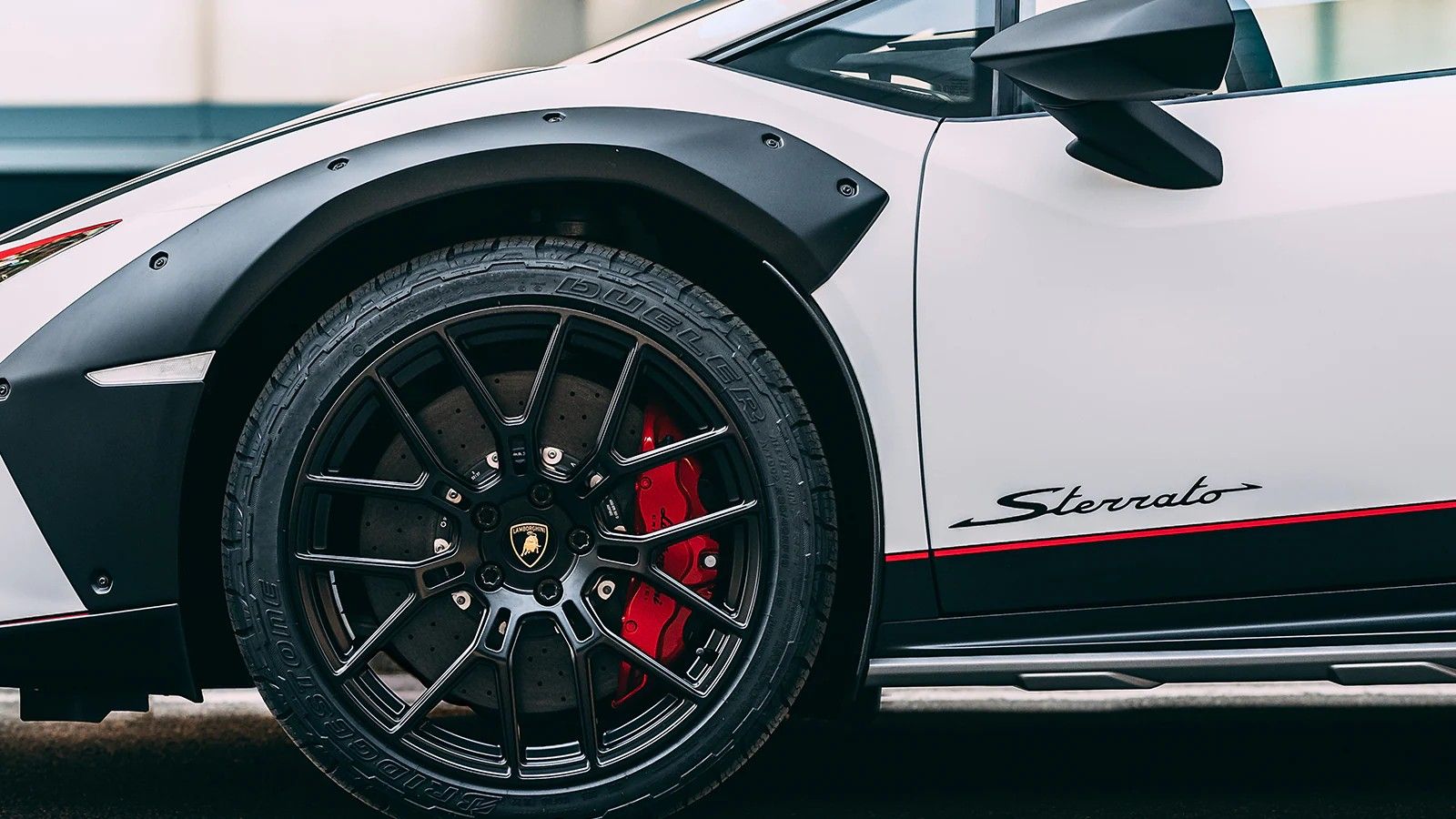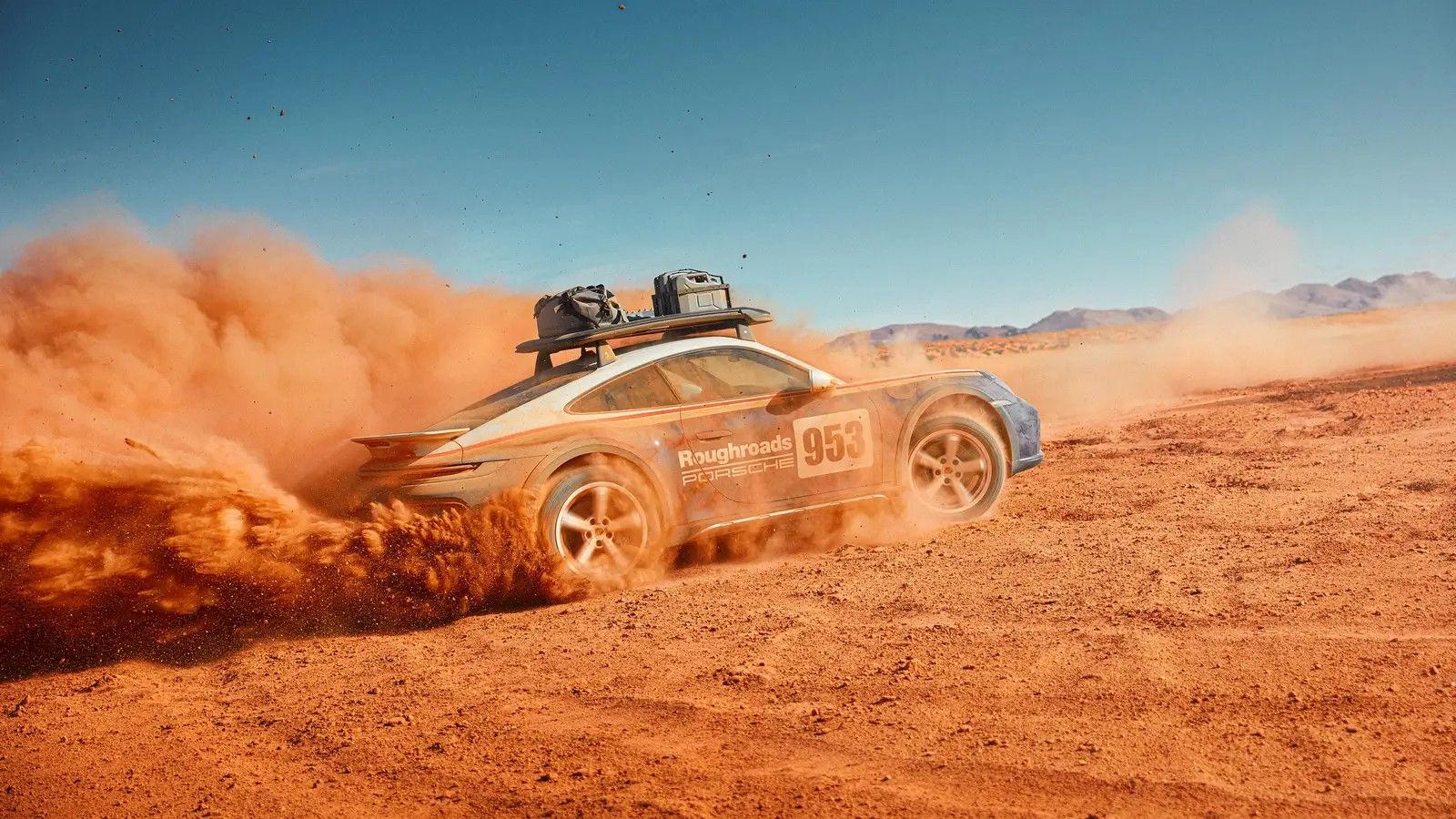Close your eyes and picture the engines of the Porsche 911 Dakar and the Lamborghini Huracan Sterrato thundering to life, echoing through the harsh and barren deserts of Abu Dhabi in the United Arab Emirates. The expectation of their rugged off-road performance can be felt in the air with each rev of their powerful motors engines.
The driver of the Porsche sits poised with his fingertips gripping the micro suede-wrapped steering wheel staring to the left only to find the Lamborghini pilot staring back at him from his cockpit-like interior with determination in his eyes. Both gladiators are ready to push their respective sport-cars past their man-made limits.
The Porsche 911 Dakar and Lamborghini Huracan Sterrato are both superior off-road supercars that have gained a lot of respect and acclaim as of late, and for a good reason. While the Lamborghini Huracan Sterrato might seem like the better vehicle due to its futuristic design and breathtaking horsepower, there are a few justifications for why the Porsche 911 Dakar is viewed as the better choice.
Experience And Expertise
Porsche has a long history of creating superior performance vehicles for off-road racing, and the 911 Dakar is no particular case. This carmaker has been associated with off-road performance since 1967, when Sobeslaw Zasada won the European Rally Championship, driving the Porsche 912. The ancestor of the 911 Dakar, the Porsche 911, would win this race the following year. The Porsche 911 Dakar gets its name "Dakar" from the 1984 Paris-Dakar Rally. It was not only the first time a sportscar was entered into a desert race but also the first time a sports car had ever won in the desert.
Porsche's artistic mastery and innovative performance have evolved through imagination and scientific ingenuity for over half a century. Then again, Lamborghini is principally known for its supercars, and the Huracan Sterrato is the most significant off-road vehicle the company has created aside from the LM002, Lambo's luxury SUV that was essentially intended for on-street use yet had some off-road capacity.
The Sterrato is a car designed to be an elite off-road vehicle based on the Lamborghini Huracán. Making the LM002 or "Rambo Lambo," as some called it, due to Sylvester Stallone famously owning one, a relative of the Huracan Sterrato but, in fact, a distant one. While Lamborghini has worked hard with the Sterrato, it needs to improve on the experience and mastery Porsche has garnered over the decades in its field.
Off-Road Ability
While the Huracan Sterrato is an excellent off-road vehicle, it is seemingly a supercar on a basic level. It has more bells and whistles and less of the heart than some of its peers. The Huracan Sterrato has been equipped with Bridgestone's Dueler AT002 off-road tires, which are low profile and thus a little less up to the challenge than the Custom Scorpion All-Terrain Pirellis on the 911 Dakar.
However, we must note that the Sterrato's whitewall is a little thicker than its predecessor, the Evo, for increased durability. It also has a 1.7-inch lift suspension for navigating rougher terrain and eye-catching, top-of-the-line bodywork. Yet, it had to be meticulously designed for off-road capabilities. It is a street car still studying skills that the 911 Dakar has mastered.
This is because the Porsche 911 Dakar is explicitly intended for off-road use, and each part of the vehicle has been streamlined. From the twin-turbocharged engine and eight-speed transmission to the 3.0-inch adjustable suspension, the 911 Dakar is carefully designed to handle the most arduous roughest terrain. Both vehicles come with different off-road modes: The Lambo is equipped with a Rally mode pushing its 602 horsepower to all four tires, enhancing any off-road excursion.
The 911 Dakar has two main modes: First, the AWD Rallye mode, similar to the Huracan, sends nearly ninety percent of its power to the rear wheels or even 100 percent if needed. Second is the Off-Road mode, which splits the power 50/50 between the front and rear wheels while automatically engaging the adjustable dual-axle hydraulic suspension lift that can raise the frame to 1.2 inches. This allows you to custom-tailor your off-road journey depending on the landscape you're traversing.
Execution And Power
The Lamborghini Huracan Sterrato flaunts an impressive 5.2-liter V-10 motor with 640 horsepower. While this is undoubtedly a noteworthy measure of force, it could not hope to compare to the 911 Dakar. The 911 Dakar includes a twin-turbocharged 3.0-liter flat-six engine that produces more than 473.
Horsepower, which is spread to all four tires by the 911 Dakar's 8-speed double-clutch automatic PDK or Porsche Doppelkupplungsgetribe, combined with the Porche Dynamic Chassis Control (PCCD) allowing the vehicle's chassis to contour to the rugged terrain like a lion chasing down its prey. These abilities allow the 911 Dakar to beat the Huracan Sterrato in every Off-road circumstance.
Handling and Manuevering
Off-Road driving is about control and steadiness, and the Porsche 911 Dakar excels in both areas. The 911 Dakar's suspension and tires have been explicitly intended to give the most extreme grasp and control on even the most challenging terrain. Its longer struts and softer springs allow for a smoother and more controlled experience.
Coupled with its custom Scorpion All Terrain Pirelli tires, that allows the 911 Dakar to become a beast, regardless, while the specific tread pattern design grants the sportscar a seamless transition from off-road so that it can also handle well on asphalt, not just gravel or sand. The Sterrato's body, though sleek and futuristic in design, appears fragile in comparison to the rugged, battle-hardened look of the Porsche 911 Dakar.
Adaptability
One of the main benefits of the Porsche 911 Dakar over the Lamborghini Huracan Sterrato is its customizable options. The 911 Dakar is intended to be effortlessly modified and tweaked to suit the particular tastes of individual drivers and operate in an environment that is more conducive to racing. This implies that drivers can fine-tune the vehicle's handling and performance capabilities, giving them a boost over their rivals. The Huracan Sterrato, then again, is a relatively resolute vehicle that can't be changed or tweaked as effectively or as easily as the 911 Dakar.
In conclusion, though the Lamborghini Huracan Sterrato is an impressive off-road vehicle compared to the Porsche 911 Dakar, the Huracan Sterrato seems more in line for glamping and sunset pictures than for serious off-road racing. The Porsche 911 Dakar, with its purposefully built design, superior engine, better handling and stability, and customizability, makes it the ultimate off-road racing sportscar and may remain on this throne for the foreseeable future.


